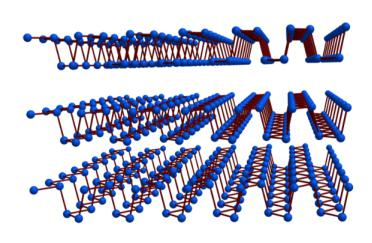Two-dimensional Black Phosphorus: Synthesis, Modification, Properties, and Applications
Date:19-09-2017 | 【Print】 【close】
The continual miniaturization of modern integrated circuits has been driving a reduction of size in semiconductor device units. Black phosphorus (BP), a new member that newly joins the two-dimensional (2D) semiconductor family, has attracted a deal of interests in nanoelectronics and optoelectronics. Besides, owing to its fascinating properties that distinguish itself from other materials, BP is also found to deliver great promise in energy and biomedicine applications.
Lately, the research group led by Prof. YU Xuefeng from Shenzhen Institutes of Advanced Technology, Chinese Academic of Science, reviewed the recent research progress on atomically thin BP systems. In this article, the authors first introduce the research history of BP and the preparation methods to exfoliate BP from bulk crystals, thin films, and quantum dots. The unique crystal and electronic structures of BP contribute to its intriguing properties that cover from optical, electrical, thermal, mechanical and biomedical areas and an emphasis is put on its unique intrinsic in-plane anisotropy. Regarding the environmental instability of BP, several modification schemes in both physical and chemical aspects are described. For applications, the article summarizes the latest research of BP on electronic and optoelectronic devices, and in batteries and biomedical applications. At last, a prospective on future research directions of BP in the aspect of improvement of stability, the study on in-plane anisotropy, and applications on photocatalyst and biomedicine is proposed. This review is highly expected to offer researchers reference and guidance to rapidly and comprehensively understand the state-of-art developments of BP, as well as to inspire innovative ideas on other 2D materials.
The paper titled “Two-dimensional Black Phosphorus: Synthesis, Modification, Properties, and Applications” was published on Material Science and Engineering -R: Reports. Prof. YU Xuefeng and Prof. Paul K Chu are the corresponding authors. This work is jointly supported by the National Natural Science Fund of China No. 51672305, Frontier Research Key Project of the Chinese Academy of Sciences No. QYZDBSSW-SLH034, etc.

Contact:
Prof. YU Xuefeng
Shenzhen Institutes of Advanced Technology, Chinese Academy of Sciences
Tel:00-86-755-86392212
Email: xf.yu@siat.ac.cn
